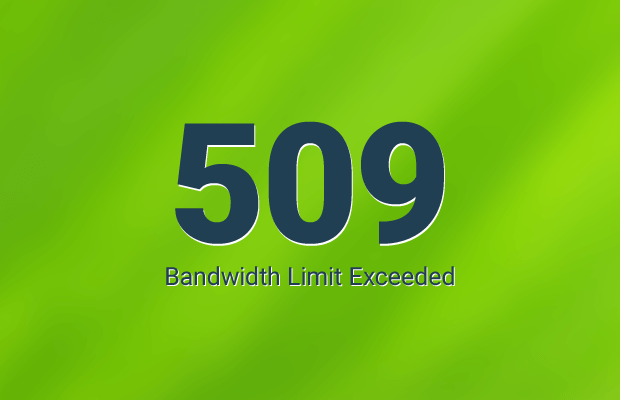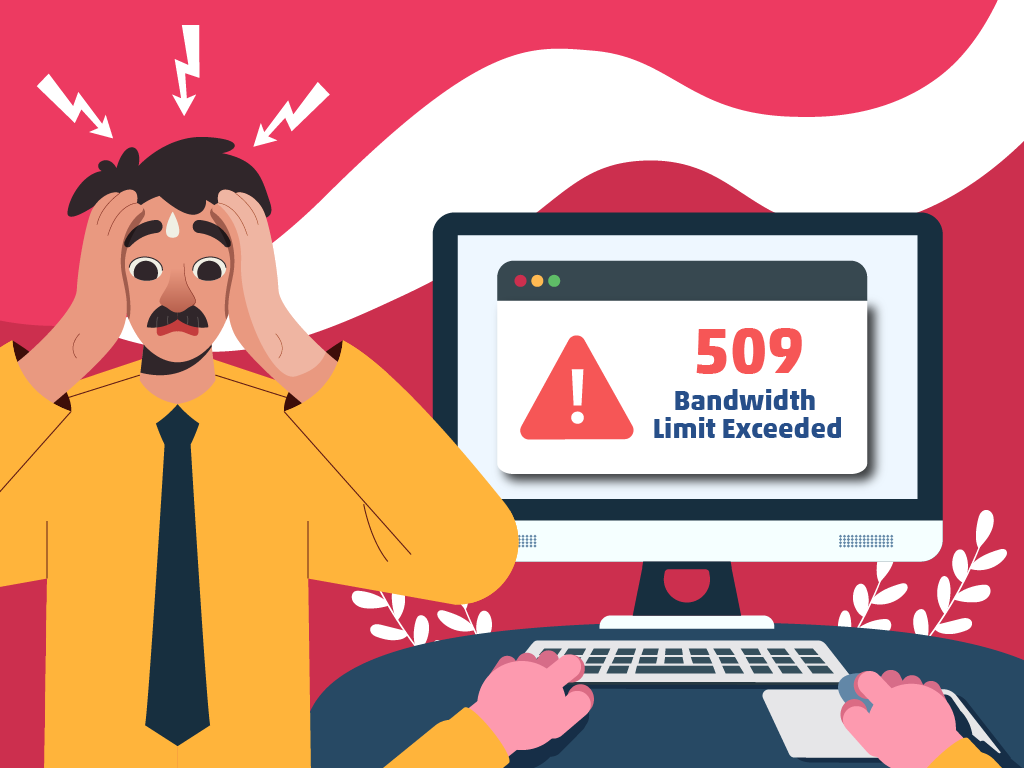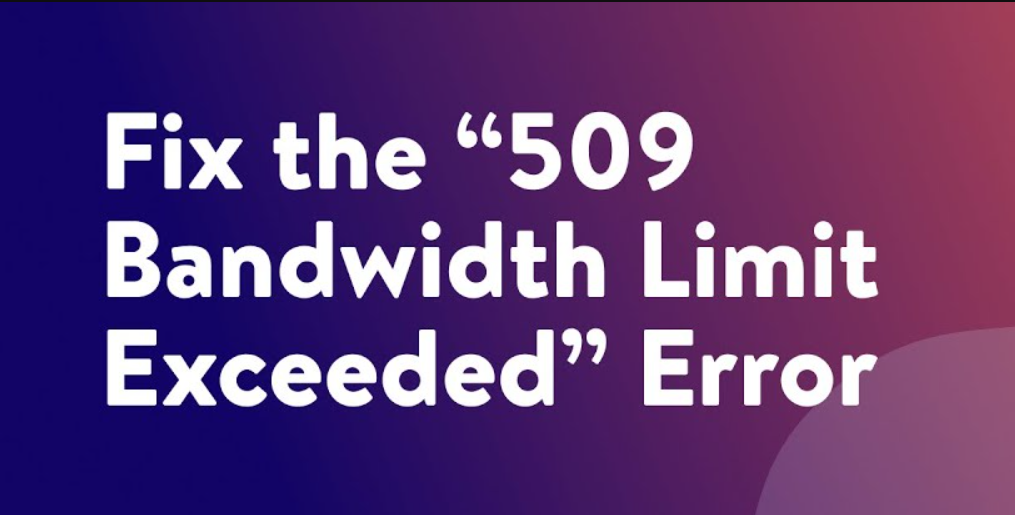Bandwidth is a critical aspect of web hosting that determines the amount of data transferred between a website and its visitors. However, encountering a “Bandwidth Limit Exceeded” error can be frustrating for website owners and visitors alike. In this blog post, we’ll explore the causes behind this error, its implications, and effective strategies to resolve it, ensuring uninterrupted access to your website.

Table of Contents
Understanding Bandwidth Limit Exceeded
“Bandwidth Limit Exceeded” refers to a situation where a website has surpassed the allocated amount of data transfer allowed by its hosting plan within a given period, typically a month. This can occur when the volume of traffic to the website exceeds expectations or when large files, such as videos or downloads, are accessed frequently. When the bandwidth limit is exceeded, the website may become inaccessible to visitors, displaying an error message instead. Resolving this issue often requires upgrading to a higher-tier hosting plan with more generous bandwidth allowances or implementing optimization techniques to reduce bandwidth usage.
Causes of Bandwidth Limit Exceeded
The causes of bandwidth limit exceeded errors can vary but commonly include:

- Surge in Website Traffic: A sudden increase in visitor numbers, often due to viral content, promotional campaigns, or external referrals, can quickly deplete available bandwidth.
- Large File Downloads: Hosting resource-intensive files such as videos, software downloads, or high-resolution images can contribute significantly to bandwidth consumption, especially if accessed frequently.
- Bot Activity: Malicious bots, web crawlers, or automated scripts may continuously scrape your website’s content, leading to excessive bandwidth usage and potential server overload.
- Resource-Intensive Applications: Websites running dynamic applications, content management systems (CMS), or eCommerce platforms may generate substantial server-side processing and database queries, consuming bandwidth resources.
Identifying and addressing these causes is essential to prevent bandwidth limit exceeded errors and ensure smooth website operation.
Implications of Bandwidth Limit Exceeded
Exceeding bandwidth limits can have several implications for a website:

- Website Downtime: When bandwidth limits are exceeded, web hosting providers may suspend the website temporarily until additional bandwidth is purchased or the billing cycle resets. This results in downtime, during which the website becomes inaccessible to visitors.
- Negative User Experience: Visitors encountering the “Bandwidth Limit Exceeded” error may perceive the website as unreliable or unprofessional. This can lead to frustration, dissatisfaction, and a negative perception of the brand or organization associated with the website.
- Impact on SEO: Extended periods of website downtime or poor user experience due to bandwidth issues can negatively impact search engine rankings. Search engines like Google prioritize websites that offer a seamless user experience, and downtime or errors can result in lower rankings and decreased organic traffic.
- Loss of Revenue and Opportunities: If the website is used for eCommerce or lead generation purposes, downtime resulting from bandwidth limit exceeded errors can lead to loss of sales, leads, and revenue. Additionally, it may result in missed opportunities for engagement, conversion, and customer acquisition.
- Reputation Damage: Frequent occurrences of bandwidth limit exceeded errors can tarnish the reputation of the website and the organization behind it. Visitors may perceive the website as unreliable or poorly managed, leading to a loss of trust and credibility.
Overall, exceeding bandwidth limits can have far-reaching consequences for a website’s performance, reputation, and success. It is essential for website owners to monitor bandwidth usage, optimize resources, and address issues promptly to ensure a seamless and reliable user experience.
8 Ways to Resolving Bandwidth Limit Exceeded Issues
Resolving bandwidth limit exceeded issues requires a proactive approach and implementation of effective strategies. Here are steps to address this problem:

- Analyze Traffic Patterns:
- Utilize web analytics tools to understand traffic patterns and identify the sources of sudden spikes. This analysis helps in anticipating future bandwidth requirements and optimizing resource allocation.
- Optimize File Sizes:
- Compress images, videos, and other large files to reduce their size without compromising quality. Utilize content delivery networks (CDNs) to distribute content efficiently and minimize bandwidth consumption.
- Implement Caching Mechanisms:
- Set up server-side and browser caching to store frequently accessed content temporarily. This reduces server load and bandwidth usage by serving cached content to users instead of regenerating it for each request.
- Monitor and Block Bot Activity:
- Monitor bot activity using analytics tools or server logs and implement measures to block malicious bots or excessive requests. Use robots.txt directives or firewall rules to mitigate bot-related bandwidth consumption.
- Upgrade Hosting Plan:
- If bandwidth limits are consistently exceeded, consider upgrading to a higher-tier hosting plan with increased bandwidth allocation. Consult with your hosting provider to determine the most suitable plan for your needs.
- Communicate with Visitors:
- In case of website downtime due to bandwidth issues, communicate with visitors through custom error pages or notifications. Provide updates on the situation and reassure users that efforts are underway to resolve the issue promptly.
- Optimize Website Performance:
- Improve website performance by optimizing code, minimizing HTTP requests, and leveraging browser caching. This reduces the amount of data transferred and helps in staying within bandwidth limits.
- Monitor and Adjust:
- Continuously monitor bandwidth usage and adjust strategies as needed to prevent future bandwidth limit exceeded issues. Regularly review website performance metrics and make optimizations to ensure efficient resource utilization.
By following these steps and implementing proactive measures, website owners can effectively resolve bandwidth limit exceeded issues, optimize resource usage, and ensure a seamless user experience for visitors. Remember, ongoing monitoring and optimization are key to maintaining a healthy balance between website traffic and available bandwidth.
Conclusion
Encountering the “Bandwidth Limit Exceeded” error can disrupt website operations and impact user experience, but with proactive measures and effective strategies, you can mitigate its effects and ensure uninterrupted access to your website. By understanding the causes behind bandwidth limitations and implementing optimization techniques, you can optimize bandwidth usage, enhance website performance, and provide a seamless browsing experience for your visitors. Remember, proactive monitoring and continuous optimization are key to maintaining a healthy balance between website traffic and available bandwidth.

